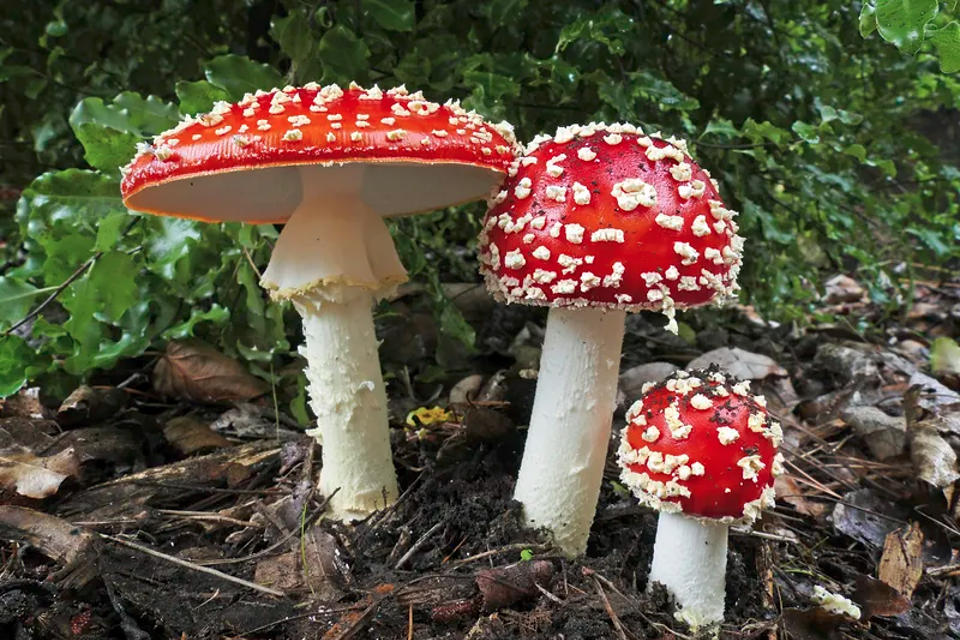Mushrooms, toadstools, fungi – oh my! Mushrooms are fascinating lifeforms that are neither plant or animal, belonging to their own special fungi kingdom. They differ from plants and animals in how they obtain nutrients. Plants make their own food by photosynthesizing energy from the sun and animals eat and internally digest nourishment. Fungi do not eat or photosynthesize; they grow into or around a food source and secrete enzymes that digest food externally. Let’s explore some more mushroom facts – they will help you be the most “fun-guy” at trivia!
5 Mushroom Facts
-
- Portobello, button, and white (cremini) mushrooms are all the same species. (source) These three delicious varieties are all the same species Agaricus bisporus, just at different maturity levels. Portobello mushrooms are the most mature and flavorful form of Agaricus bisporus. That is because as mushrooms mature, the slowly lose water content, making the flavor more concentrated.
-
- Mushrooms “make wind” to spread spores. (source) Research has found that mushrooms are capable of producing air flow by allowing their moisture to evaporate. This evaporation cools the mushroom because the phase change from liquid water to vapor uses up heat energy. Cold air has more density than warm air, and tends to flow and spread out, so this force is able to carry out spores beyond the mushroom’s space.
-
- Mushrooms produce vitamin D when exposed to ultraviolet light. (source) While mushrooms do not need sunlight to grow (they gather nourishment from their growing medium, such as compost), they produce a substantial amount of vitamin D when exposed to sunlight or UV light. This makes many mushrooms an excellent source of vitamin D! In fact, vitamin-D enhanced mushrooms are the only non-animal food product containing an abundance of bioavailable vitamin D, making it an ideal source for vegans and vegetarians.
-
- The entire life cycle of a mushroom is rarely seen. (source) Before the mushroom structure we know and love appears above ground, the fungus lives as a mycelium, or a root-like network of filaments that infuses a food source (such as soil or wood). With the right conditions, the mycelium sprouts a fruiting structure (a mushroom), which emerges from the food source to spread spores that are almost as fine as smoke. Once the spores find a suitable place, they germinate and become a new mycelium. So essentially, mushrooms are the fruit of a bigger, hidden organism.
-
- Trees and plants depend on mushrooms. (source) Fungi form mutualistic relationships with other species. Mutualism is when two or more organisms work together for mutual gain. The mycelium of many fungus species form exterior sheaths around the roots of other plants. Since mycelium stands are much more fine and widespread than tree roots, the mycelium acts as an extension of the plant’s root system, allowing more effective absorption of water and nutrients.




